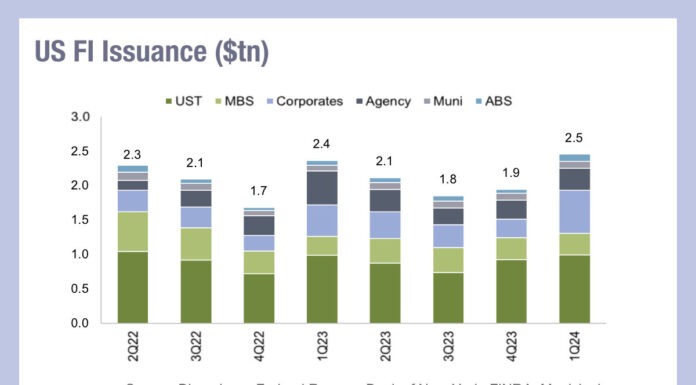Analyst firm, Coalition Greenwich, has found that block trades in the US bond market, defined as trades in investment grade (IG) with a notional value of US$5 million+ or more and for high yield (HY) US$1 million+ by the Financial Industry Regulatory Association (FINRA), are still largely high touch, manual trades conducted bilaterally, presenting a massive opportunity for firms seeking to electronify and automate bond trading.

“The buy side still executes the majority of its block trades away from trading venues, preferring phone or chat via Instant Bloomberg (IB),” writes Keving McPartland, head of research for market structure & technology at Coalition Greenwich. “Of the 53 corporate bond traders participating in our study, 75% feel chat provides the best outcome when trading orders with a notional value over US$2 million for both IG and HY, and 58% favour the phone. That compares to only 15% who believe sending a disclosed request for quote (RFQ) of the full size results in the best execution.”
He notes that the study for the most part dealt with large asset managers, who trade over US$2 million “in size”, which made up 66% of their notional trading volume on average and 48% of their traded tickets.
“It’s worth noting that the standard deviation of the percentage of block-sized trading tickets executed by each firm in our study was higher than by notional volume, a reminder that each buy-side firm’s trading mix can be quite varied,” he wrote. “Nevertheless, with our study participants executing only 10% of their block volume on a trading venue today, it is no surprise that the largest bond trading venues are actively working to enhance their offerings to lure more of that volume on screen.”
The study also shows how dealer relationships in the US market are still far more impactful on trading activity than in Europe, where electronic trading by proportion of volume has overtaken activity in the US market.
“After eight years of growth that started in 2013, e-trading as a percentage of the total US market has remained relatively flat since December of 2021,” notes McPartland. “Investment-grade and high-yield e-trading on average has remained stuck at their current 40% and 30% levels, respectively. But if the largest asset managers could be convinced to trade even some of that 90% of block volume on venue rather than via chat or the phone, the e-trading growth could get back on track.”
In the US 44% of respondents said dealer relationships were ‘very impactful’ on trading blocks vs just 23% in Europe.
The report says that relationships and the revenue they generate will become increasingly electronic, given that corporate bond e-trading has been “a boon for the buy side” providing better access to more liquidity, tighter prices and process efficiency than phone and message-based trading.
“However, these positive feelings disappear when executing block trades,” concludes McPartland.
©Markets Media Europe 2023





















